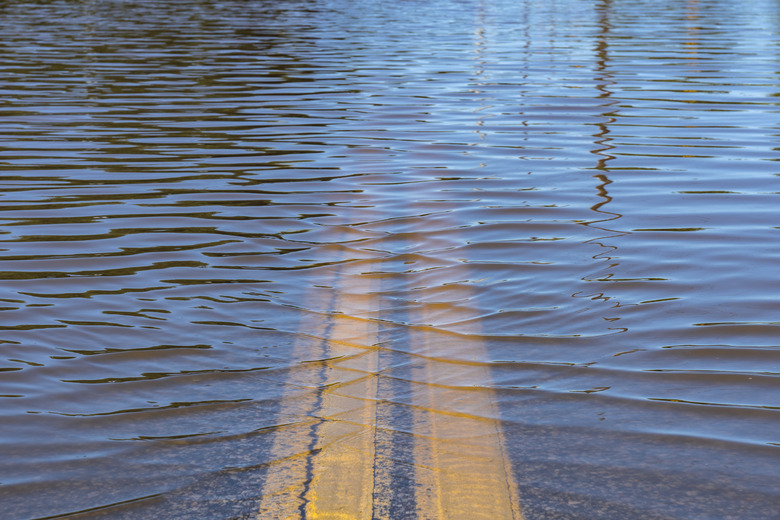Science Projects With Flood Models
Flood models are interesting to build, and make a great basis for a stellar science project. Although making your first flood model may be difficult, it can help you to demonstrate different aspects of how a flood works. You can also use it to figure out ways to predict or reduce flooding in various areas.
Effects of Basic Levees
Effects of Basic Levees
Use a shallow box and some clay to build a basic flood model. Just make sure to leave room for a river down the center of the box, and build up the edges of the river to represent the land. If you'd like, add several smaller rivers, or tributaries, leading into the river. Then, fill the river entirely with water and tip the box slightly, while having a partner pour additional water into the top part of the river.
You can easily add "levees" by building up the sides of the river with clay. Just make a thin wall around the river, and then try the simulation again. Observe the difference in water movement. You can use this flood model to demonstrate the importance of levees around rivers.
Testing Soils
Testing Soils
Some types of soils are more conducive to flooding than others. Test various types of soils by putting them into a cone-shaped piece of filter paper held over a cup, and pouring a set amount of water over each one. Measure the amount that drains through the soil into the cup. (You may want to do two runs of this step – one while the soil is dry, and one while it is saturated.) Based on your results, consider which soil would be most likely to flood.
Although this project only addresses one aspect of a flood model, it can be used as a precursor for a bigger project. Using a similar process to the flood model, make three different models of a river, each using a different type of soil to surround it. Then, test the three models to see which creates the biggest flood.
The Best Type of Levee
The Best Type of Levee
Using a flood model, you can test various types of levees. Even areas that do have levees can sometimes flood. For example, the levees that collapsed during Hurricane Katrina were mostly I-wall levees, and after the flood many of them were replaced with T-wall levees. Research the differences between I-wall levees, T-wall levees, and earthen levees and create each of them using Popsicle sticks, clay, or other craft items. Test the effectiveness of each, and draw conclusions about which type of levee is optimal for various conditions.
Cite This Article
MLA
Perles, Carrie. "Science Projects With Flood Models" sciencing.com, https://www.sciencing.com/science-projects-flood-models-5953736/. 5 February 2010.
APA
Perles, Carrie. (2010, February 5). Science Projects With Flood Models. sciencing.com. Retrieved from https://www.sciencing.com/science-projects-flood-models-5953736/
Chicago
Perles, Carrie. Science Projects With Flood Models last modified August 30, 2022. https://www.sciencing.com/science-projects-flood-models-5953736/
